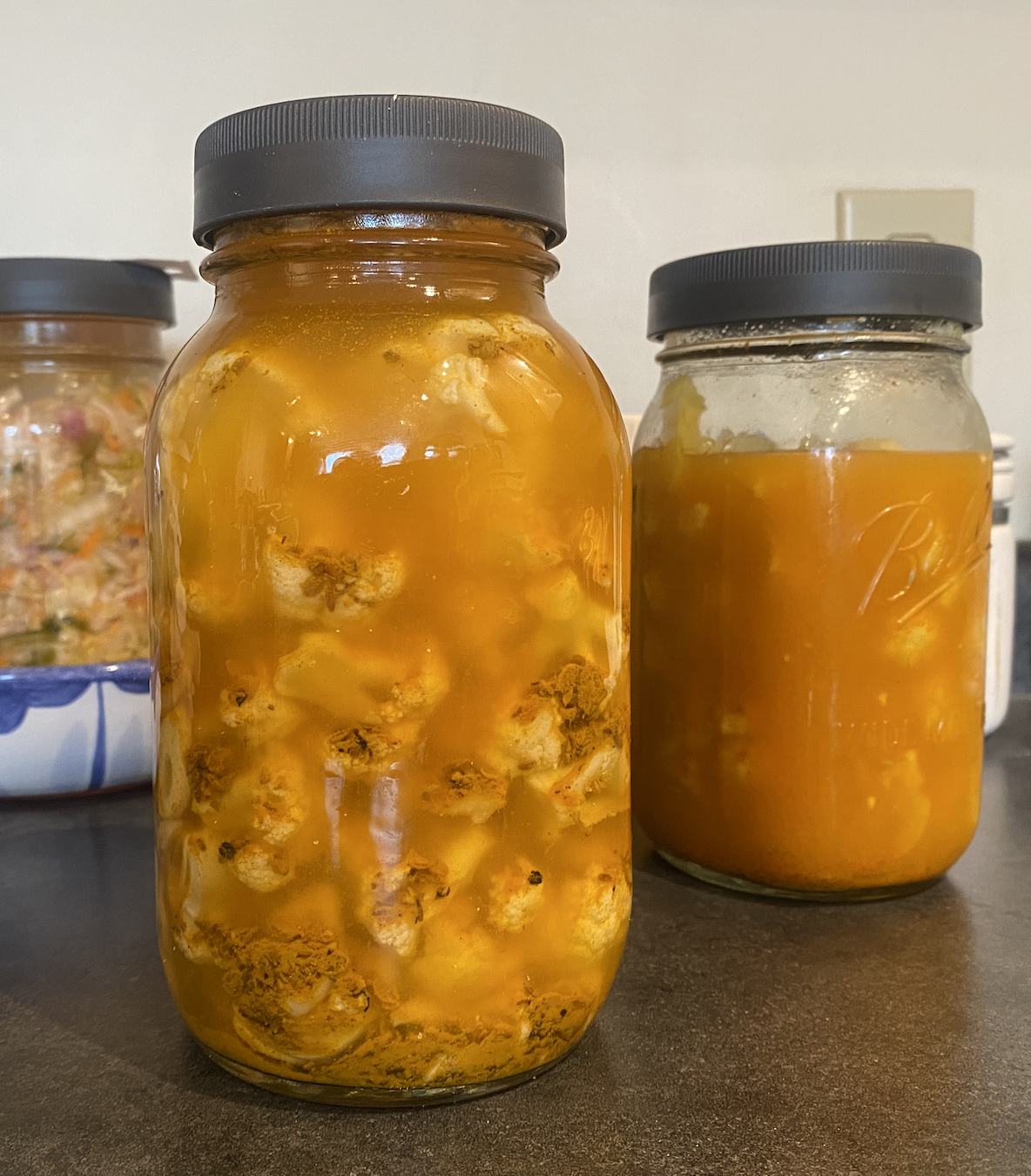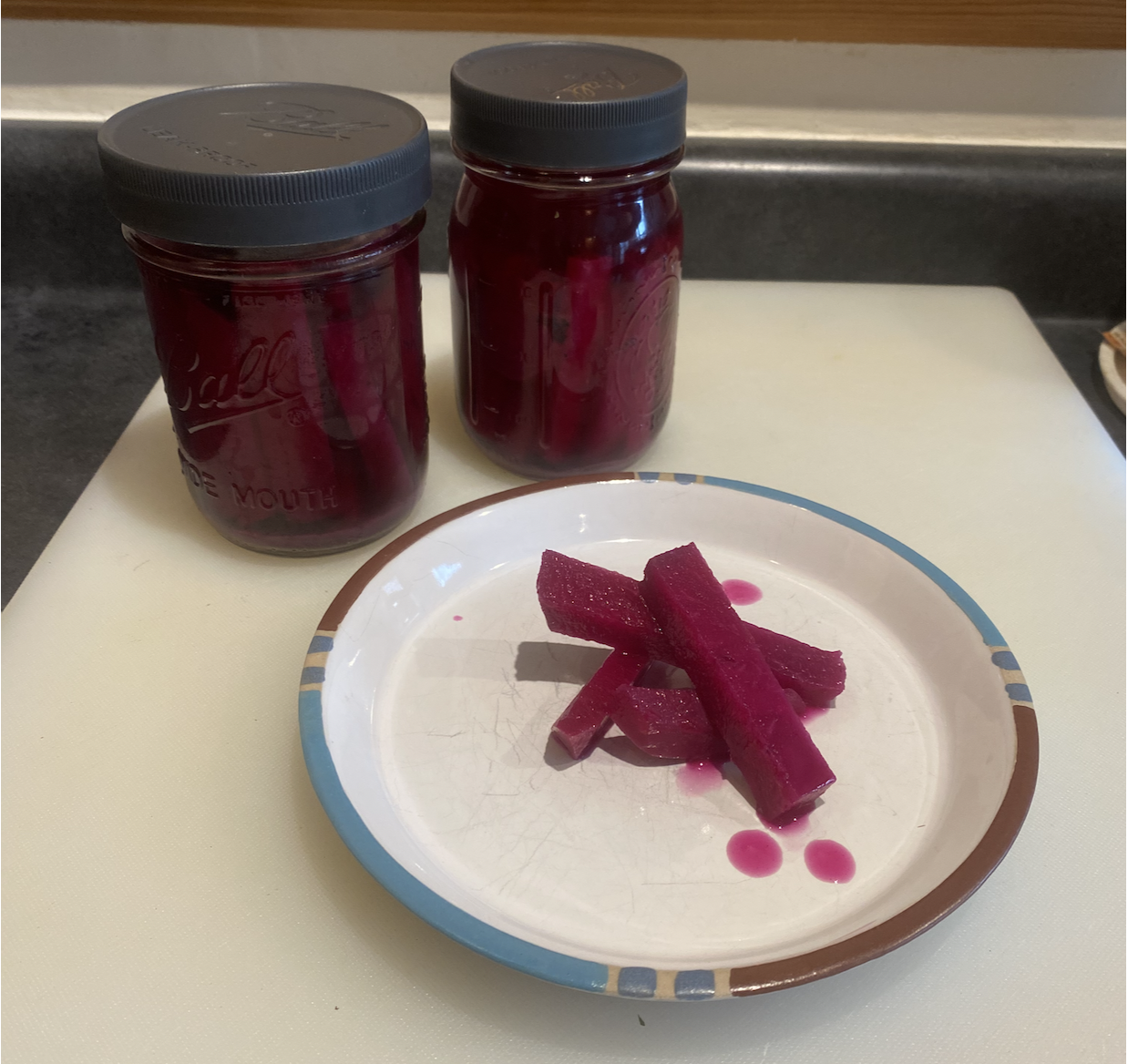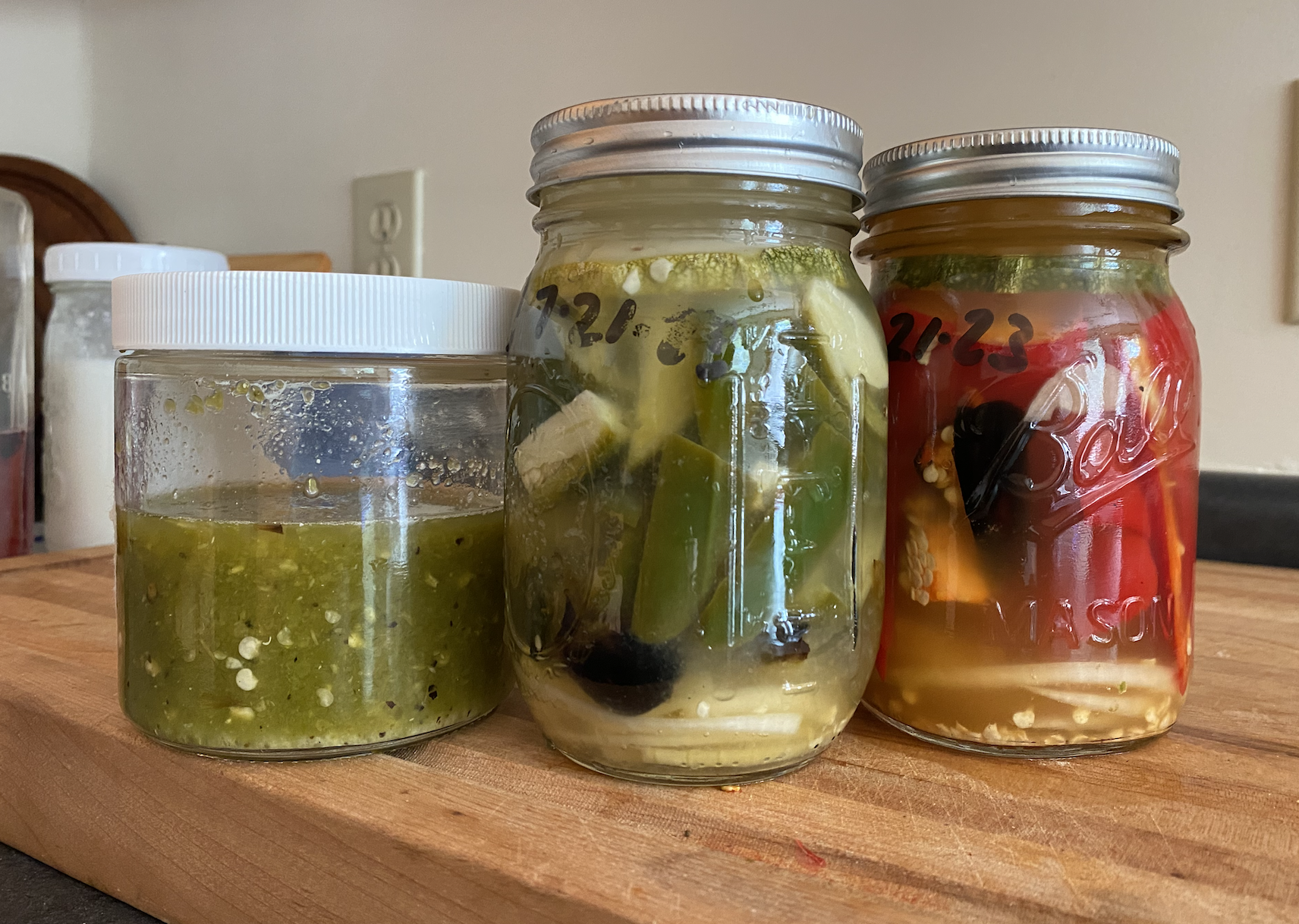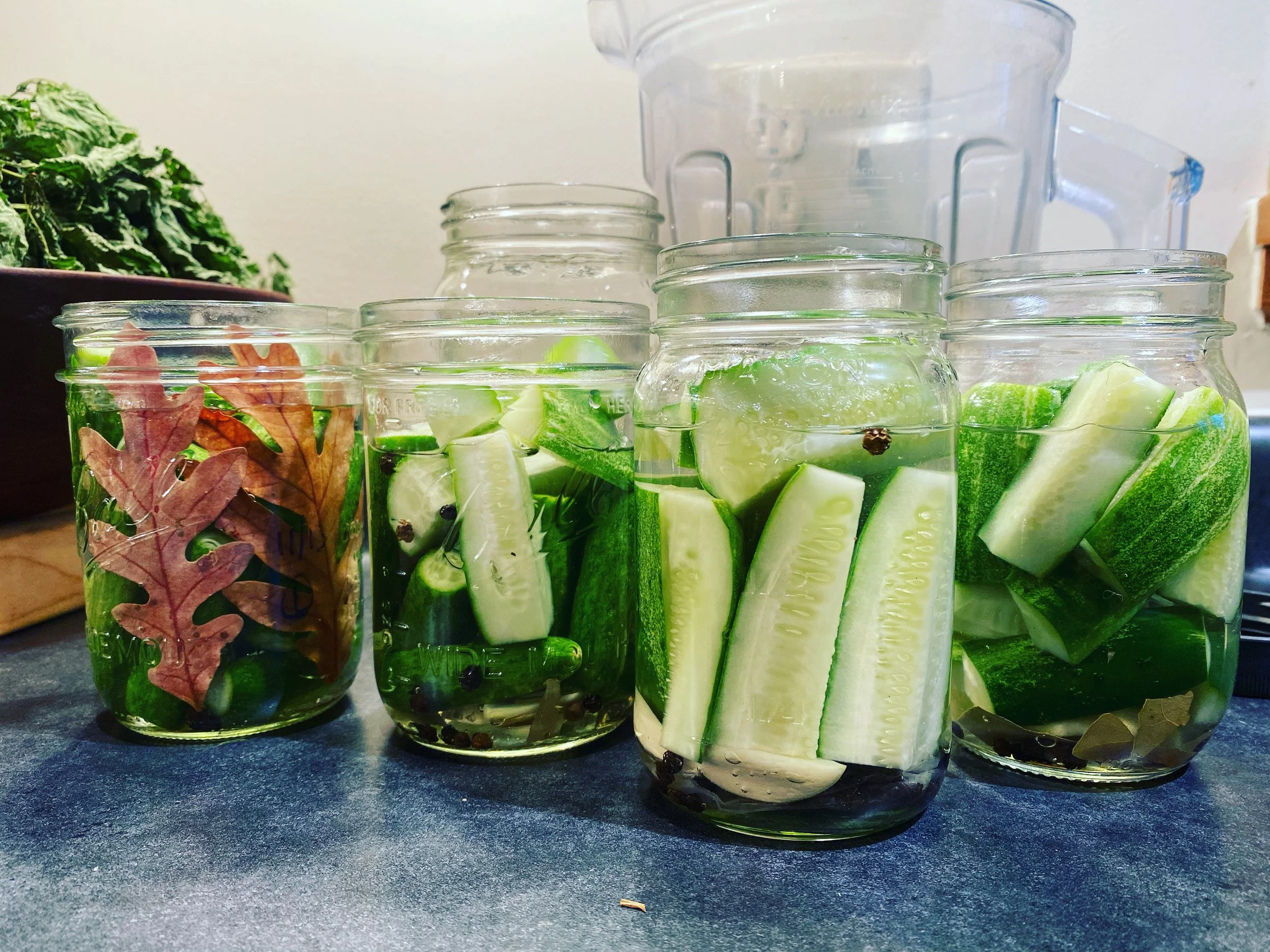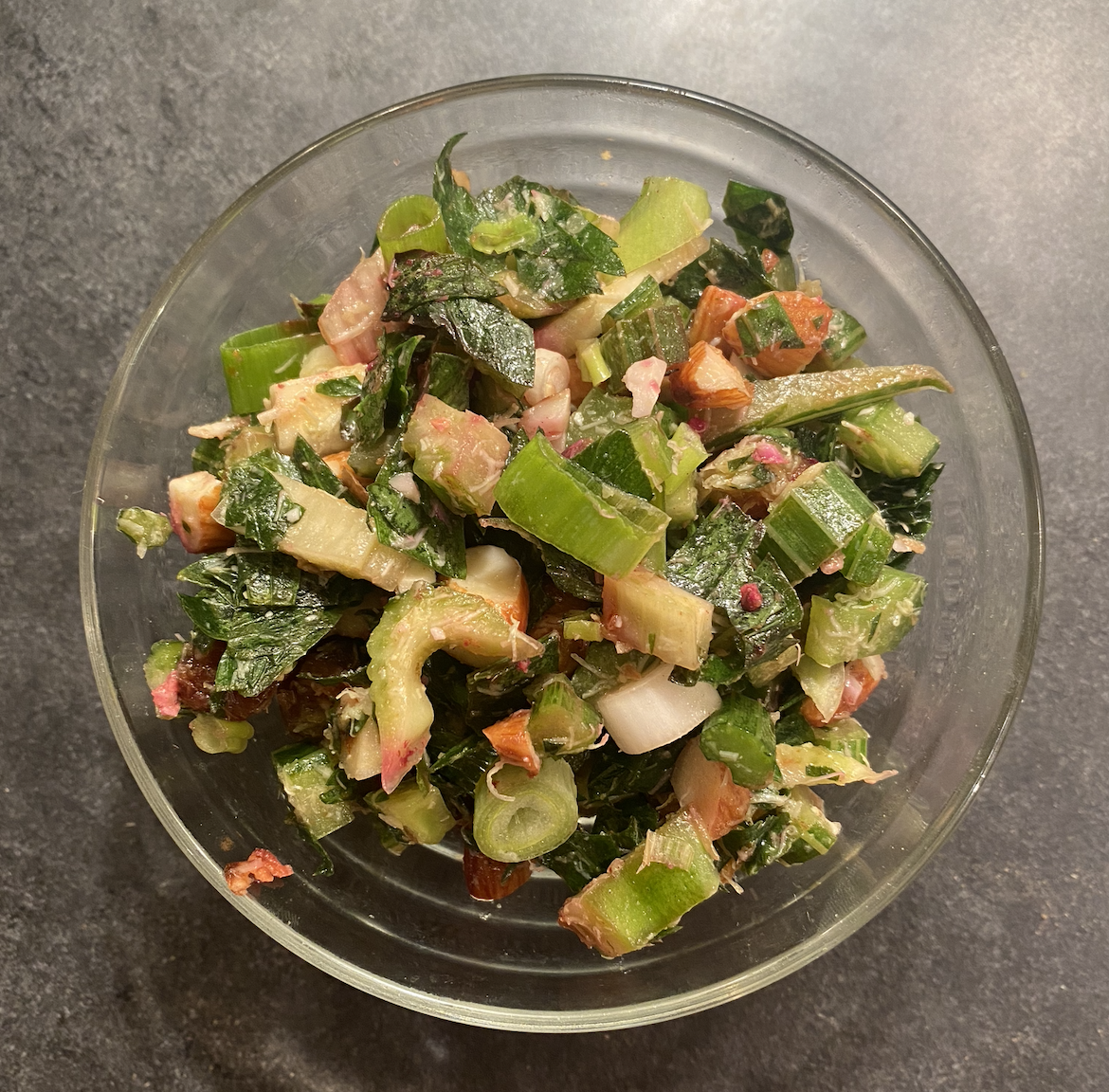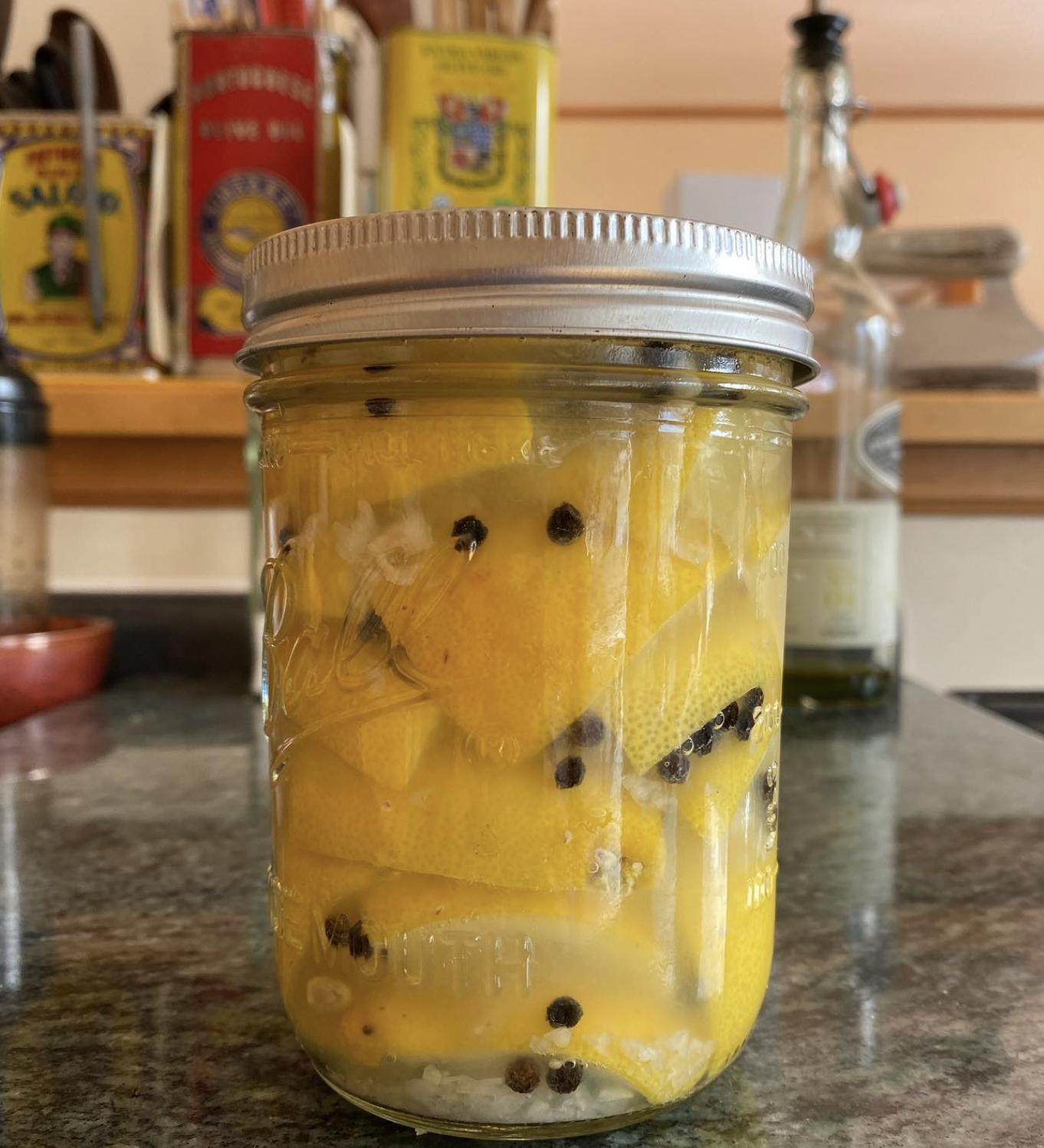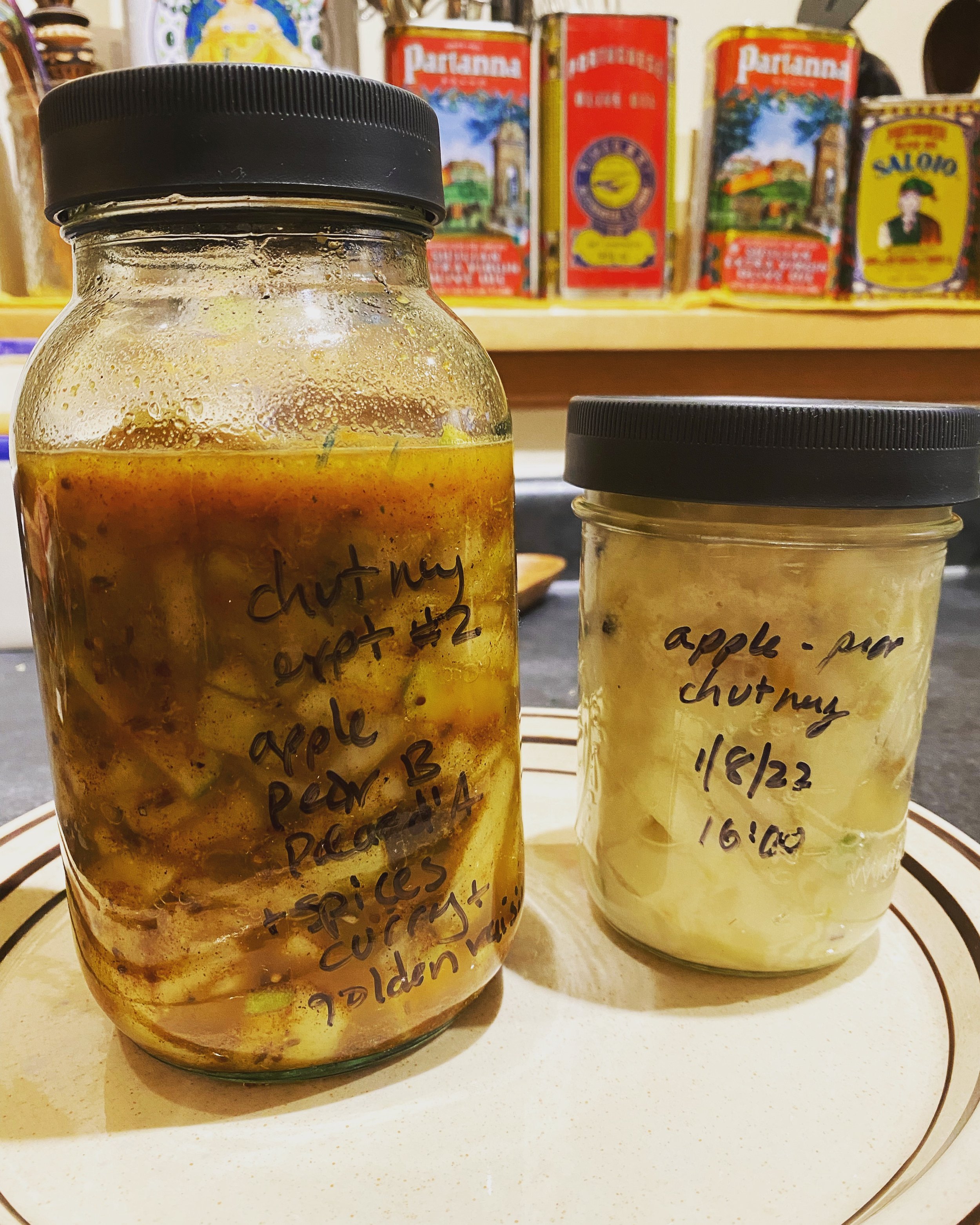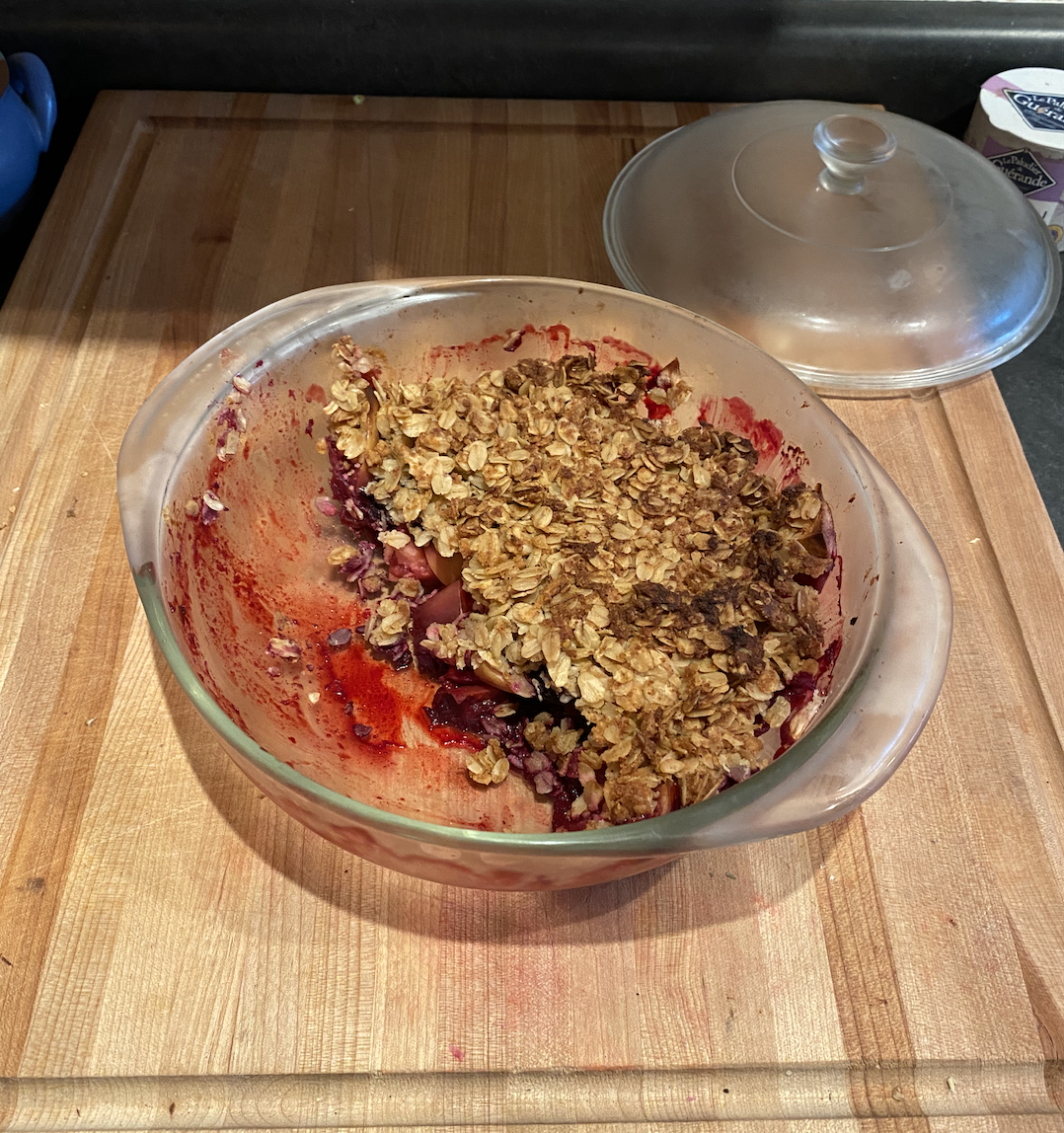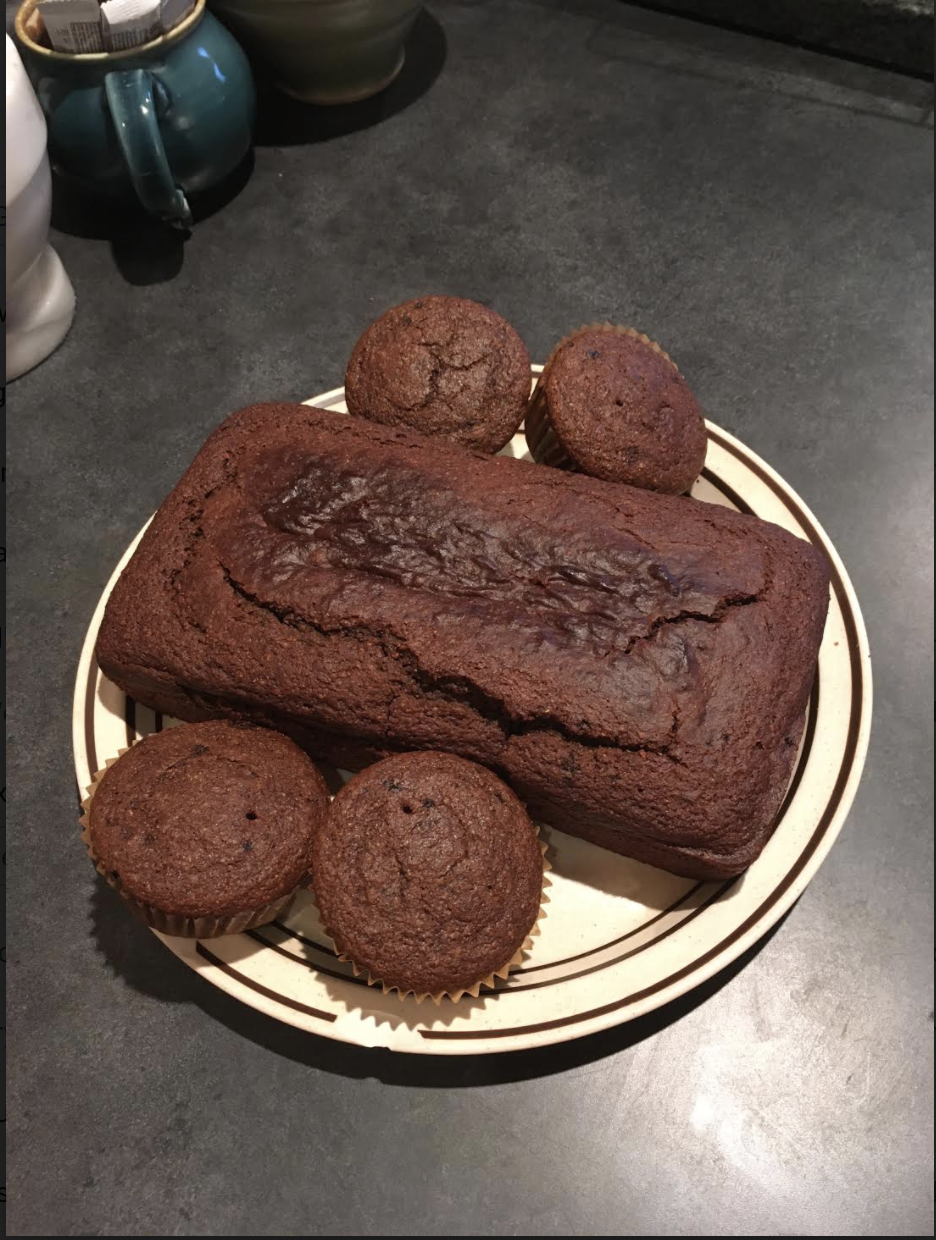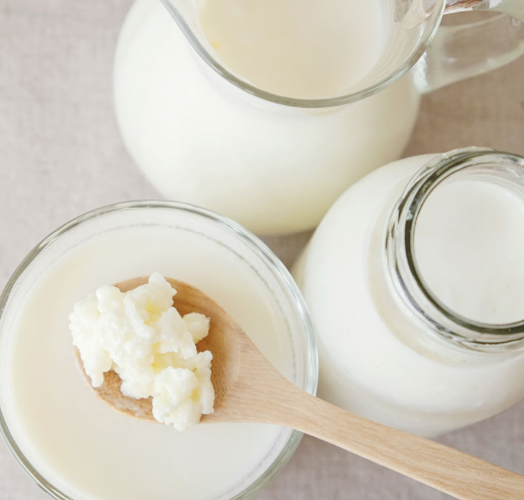Kombucha is a fermented beverage that falls into the category of live probiotic food. The name “kombucha’ is actually a misnomer (not cha or tea made of the seaweed kombu) but the name has caught on and is now entrenched in popular nomenclature. Kombucha has a deep history from the Orient, to Eastern Asia, Russia and into Europe. It’s basically fermented black tea sweetened with sugar and cultured with a SCOBY. This is an acronym for Symbiotic Culture Of Bacteria and Yeast. The green tea-honey version is called ‘Jun’, but it’s basically the same idea, and my current Kombucha culture came from a Jun that I then added to black tea and sugar.
Primary Fermentation
Ingredients:
4 C water (2X recipe: 8 C water)
1 teaspoons of loose black tea, or 1 black tea bag. English breakfast, Oolong, or orange pekoe are great. You could also use green tea. (2X recipe; 2 teabags) ***(decaf? see note below)
3/8 C sugar (I use plain white sugar) You could also use honey (use 2/3 the amount of honey - it’s sweeter) or maple syrup, or agave etc. It just cannot be fake - the microbes need real carbohydrates to metabolize! (2X recipe: 3/4 C sugar)
SCOBY plus some of it’s previous fermentation liquid - this is the source of the microbial culture.
Equipment:
Large glass or plastic jar/container that can hold 4 C/1 liter (not metal). A large quart mason jar works well (Lid for transport)
clean tea towel and rubber band
______
Put the loose or bagged tea in a tea pot, and add boiling water - cover, steep (30 min - overnight), then cool. Discard the tea.
Add cooled brewed tea to the jar, add water to make up a total of 4 C and dissolve 3/8 C sugar into it. Put today’s date on the jar with a sharpie.
Add your SCOBY plus liquid to the diluted sweet tea. Cover with a tea towel and secure with a rubber band so nothing flies in, and wait 1-2 weeks.
I suggest tasting it every day so you get an idea of how it progresses. Using a clean spoon, dip out some of the liquid from underneath the newly-forming SCOBY. It will go from very sweet to slightly vinegary and fizzy. How far you let it go is up to you. It will move faster in warmer months, and slower in cooler temperatures. Try to keep the fermentation at 75-80F; this is more important that I originally thought. I have to put it near my furnace in winter months because I keep my house pretty cool. One the fermentation reaches the flavor you like, you have successfully made plain kombucha! Congratulations!
Secondary Fermentation
To get fancy with flavors, decant the liquid from the first batch into a corkable bottle, add more microbe food in the form of fruit sugar, seal it, thus trapping the CO2 to make a flavored fizzy kombucha.
Ingredients:
Decanted kombucha from the primary fermentation (leave about 2 inches of liquid in with the mother SCOBY in the original vessel)
Fruit juice (pasteurized or freshly squeezed/prepared) or pieces of clean fruit, berries other flavoring in any combination.
Equipment:
Clean funnel is useful for pouring kombucha from first batch into bottles without a big mess.
Clean corked bottles. I like the grolsch or swing armed ones, and I also like using old liquor bottles - they are so pretty with the colorful kombucha in it.
A little bit of extra sugar, if necessary (for example if using lavender or ginger root; flavorings without a lot of sweetness)
____
Put juice or fruit in the bottom of the bottles, and carefully decant some of the primary kombucha on top. Leave a good 2 inches of space at the top of the bottles. Cork the bottles and leave at room temperature (optimally 75-80F) and wait 2-3 days. Burp the bottles every day. I suggest you also taste them every day to get an idea of how fast they will move. If the primary ferment is quite sour, the secondary won’t need very much time, and could tip over into vinegar quickly, so keep an eye (taste bud?) on them.I have also added a teaspoonful or sugar in there to bring the flavor back from overly-acid. A new baby SCOBY will form in the secondary too, since it is from the same culture as the mother. To consume, I gently shake the bottle (careful when you open it - fizzzzzzz!) and then pour the kombucha through a strainer. This way I get the benefit of the liquid culture, but not the solids. Some folks consume them (ugh, I just can’t… too slimy.)
Once you are happy with the flavor of your secondary ferment, cork it and move it to the fridge where it will slow down drastically, and be a more refreshing beverage. They’ll re-fizz themselves a little due to the very slow fermentation that still occurs in the cooled corked bottles. Refrigerating is important so that CO2 doesn’t build up too much, blow out the bottles and make a mess.
Kombucha make great mixers or soda replacers in cocktails or mocktails.
***Decaf Kombucha note:
Remember that kombucha is a caffeinated beverage - the culture has evolved in black or green teas which are naturally caffeinated, and the microbes need it to survive. Commercially decaffeinated teas are achieved by treatment with various chemicals like ethyl acetate or methylene chloride, so I’m not a fan. You could use your SCOBY to make kombucha with a tisane/naturally decaffeinated tea like chamomile or rooibos. But the SCOBY does prefer to be caffeinated, so if you do this plan to recaffeinate your mother SCOBY by doing a regular black tea brew every other batch.
Secondary Ferment flavors; Add about 1/4 C of liquid pasteurized juice, fresh squeezed juice, a few berries, to some lightly smashed fruit slices to a clean bottle 2/3 full of your strained primary ferment (once you are happy with the flavor and kick). This is where you can get very creative.
My favorite flavors right now are: black raspberry, raspberry, lavender, ginger, peach, and lemon-rosemary. Basically what I have around the house with frozen berries or fruit from the summer. Other great flavors are pomegranate, sour cherry and blueberry, which I create by buying bottles of organic juice from the store. Once opened keep juice refrigerated or it will ferment, because everything ferments!! I pour the juice into ice cube trays so I can store small amounts in the freezer that I may then add to future secondary ferments.
pear-ginger
toasted coriander and lime (toast and crush 2 teaspoons coriander seeds, add to bottle along with the juice of 1 lime) ** this one is delicious!
blueberry (add 1/4 blueberry juice) or 1/4 C of smashed (washed) fresh or frozen blueberries
tart cherry (add 1/4 tart cherry juice to the bottle)
raspberry (add 6 cleaned raspberries -frozen OK- to the bottle. Be sure to check for mold on the raspberries, there’s always an evil one somewhere...)
lemon-rosemary
strawberry-sage
rosa rugosa petals (beyond amazing - 5-6 flowers-worth of petals and it’s like you are drinking beautiful sunshiny roses. collect your rose petals away from roadways and other pollution sources. I like gathering them near beaches.)
If you forget about your flavored kombucha and it goes waaaaay too sour, then you have kombucha vinegar! Use it to make salad dressings or give soups or sauces a bright acid note. I forgot a raspberry secondary once, and made a (lot of) delicious raspberry vinaigrette.
Trouble shooting: how to get more “fizz”:
The fizz is the “exhaled” carbon dioxide from the metabolic processes of the microbes.
TLDR nerd version: Just like us, bacteria and yeasts in the SCOBY eat sugars or carbohydrates, which occur in 5- and 6- carbon chains, breaking them apart into single carbon molecules. This process liberates and recaptures the stored energy between the carbon bonds. We also obtain energy from our food in this manner, and call it “metabolism”. We eat foods made up of mixtures of fats, carbohydrates and proteins, break them apart and use them as building blocks to build and repair our bodies, and harvest the energy between the carbon bonds. We use oxygen to do it, and we exhale the most broken down and oxidized form of carbon; a single carbon atom with two oxygens attached, also known as carbon dioxide/CO2. The microbes do it in other ways, using water, but also end up releasing CO2. This is the fizz.
Firstly, to capture CO2/fizz, check that the lid of your bottle is air-tight. Carbonation happens when the CO2 cannot escape from the vessel, and instead dissolves into the kombucha. Once your secondary fermentation has reached the flavor you like, ensure the cap is tight and then refrigerate.
Secondly, you can add a little bit more sugar/food to the secondary fermentation for the microbes to metabolize and release a bit of extra CO2.
Once you put your kombucha in the fridge, metabolism will continue at a very reduced rate so you might get discernible carbonation, or it might be too slow to really re-fizz a lot. The microbes go into a bit of hibernation. Home-made kombucha will never be as carbonated as commercial brands, which are forcibly carbonated.

